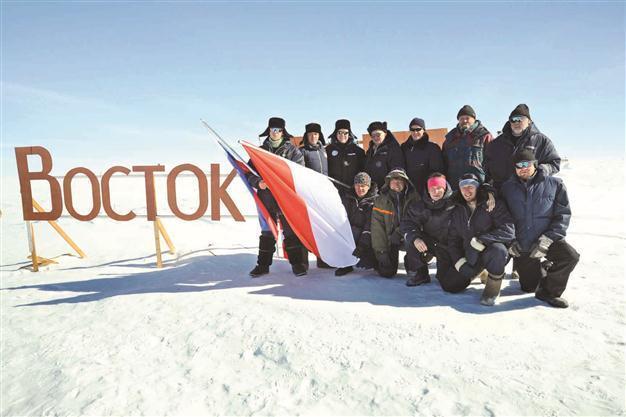Russia ‘drills into’ subglacial lake
MOSCOW - Agence France-Presse

Prince Albert II of Monaco (3rd L) poses with scientists of the research station Vostok.
A Russian team has succeeded in drilling through four kilometres of ice to the surface of a mythical subglacial Antarctic lake which could hold as yet unknown life forms, reports said on Feb 6.
Lake Vostok is the largest subglacial lake in Antarctica and scientists want to study its eco-system which has been isolated for hundreds of thousands of years under the ice in the hope of finding previously unknown microbiological life forms.
“Our scientists completed drilling at a depth of 3,768 metres and reached the surface of the subglacial lake,” an unnamed source told Russian state news agency RIA Novosti.
Sergei Lesenkov, spokesman for the Arctic and Antarctic Scientific Research Institute, told AFP in Moscow that there was the possibility of a “fundamental scientific development.” Lesenkov said that analysis of the composition of gas bubbles discovered in the ice above the lake could help climate change research.
“Because the lower layer was formed 400,000 years ago, from the composition of the gas it is possible to judge the gas composition in the atmosphere 400,000 years ago and during the time that has passed since the formation of the lake,” he said. “From there, it is possible to identify and forecast certain climatic changes in the future. ”
No official announcement of the breakthrough has been made. “If it is true and it’s successful, it’s a milestone that’s been completed. Exploring environments such as Lake Vostok would allow scientists to discover what life forms can exist in the most extreme conditions,” Professor Martin Siegert from the University of Edinburgh, told AFP.
Prince Albert II of Monaco,
